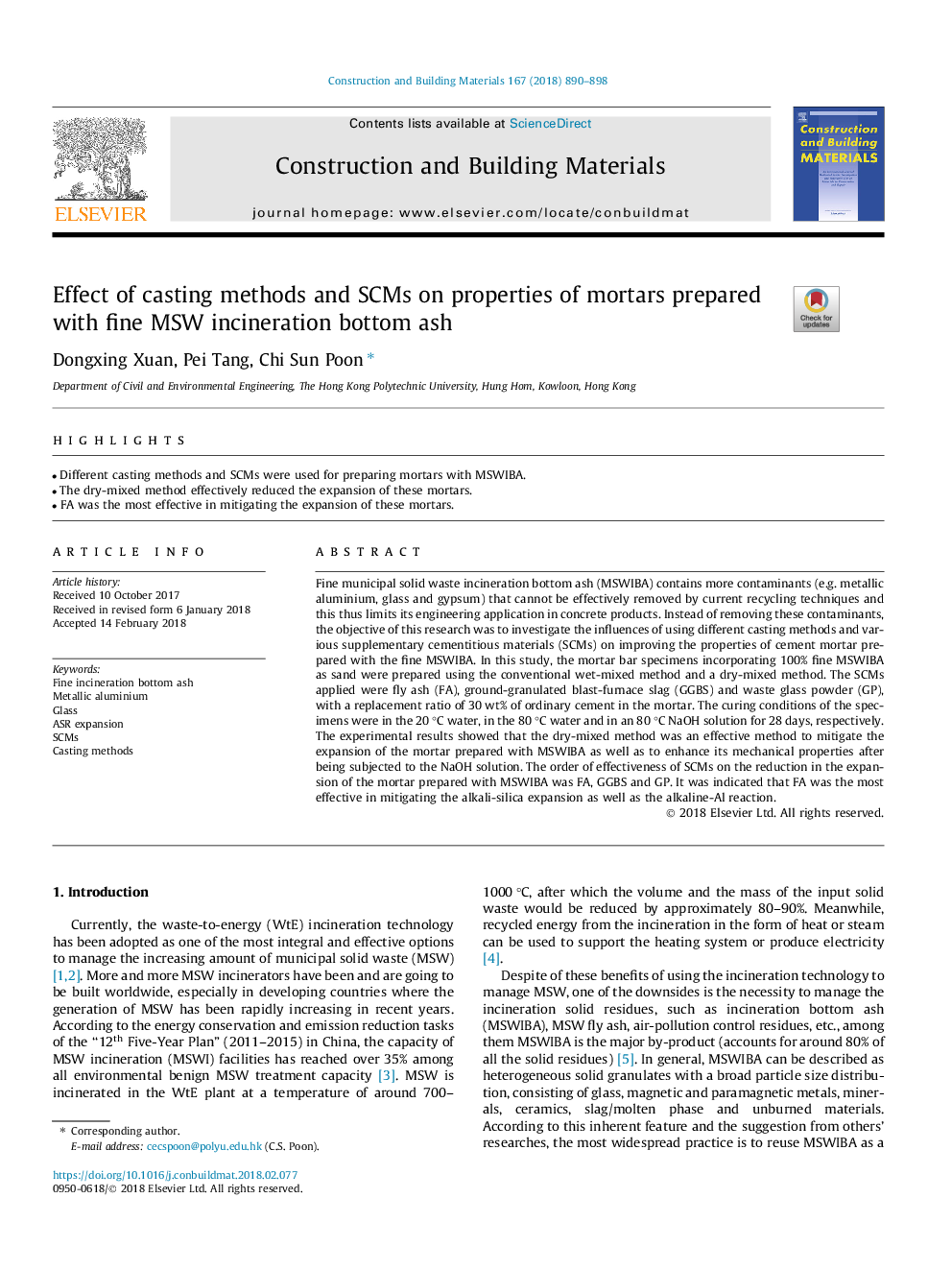| Article ID | Journal | Published Year | Pages | File Type |
|---|---|---|---|---|
| 6715501 | Construction and Building Materials | 2018 | 9 Pages |
Abstract
Fine municipal solid waste incineration bottom ash (MSWIBA) contains more contaminants (e.g. metallic aluminium, glass and gypsum) that cannot be effectively removed by current recycling techniques and this thus limits its engineering application in concrete products. Instead of removing these contaminants, the objective of this research was to investigate the influences of using different casting methods and various supplementary cementitious materials (SCMs) on improving the properties of cement mortar prepared with the fine MSWIBA. In this study, the mortar bar specimens incorporating 100% fine MSWIBA as sand were prepared using the conventional wet-mixed method and a dry-mixed method. The SCMs applied were fly ash (FA), ground-granulated blast-furnace slag (GGBS) and waste glass powder (GP), with a replacement ratio of 30â¯wt% of ordinary cement in the mortar. The curing conditions of the specimens were in the 20â¯Â°C water, in the 80â¯Â°C water and in an 80â¯Â°C NaOH solution for 28â¯days, respectively. The experimental results showed that the dry-mixed method was an effective method to mitigate the expansion of the mortar prepared with MSWIBA as well as to enhance its mechanical properties after being subjected to the NaOH solution. The order of effectiveness of SCMs on the reduction in the expansion of the mortar prepared with MSWIBA was FA, GGBS and GP. It was indicated that FA was the most effective in mitigating the alkali-silica expansion as well as the alkaline-Al reaction.
Keywords
Related Topics
Physical Sciences and Engineering
Engineering
Civil and Structural Engineering
Authors
Dongxing Xuan, Pei Tang, Chi Sun Poon,
